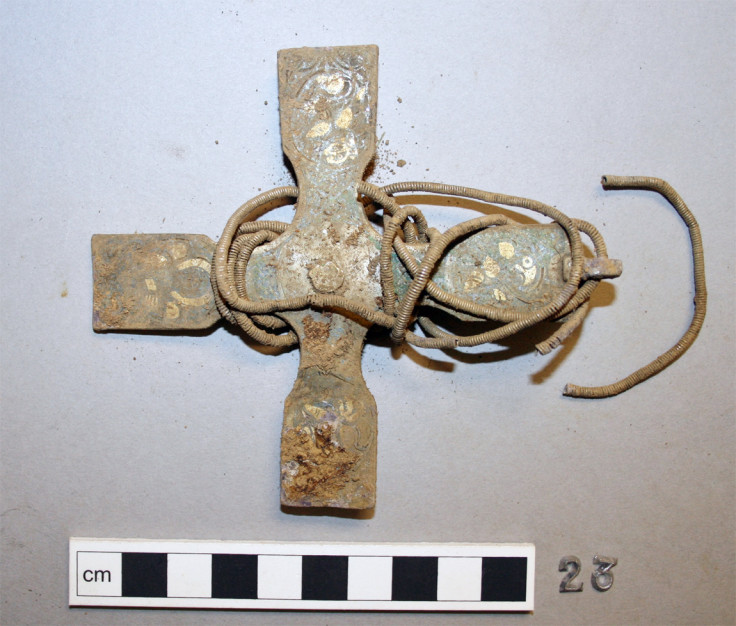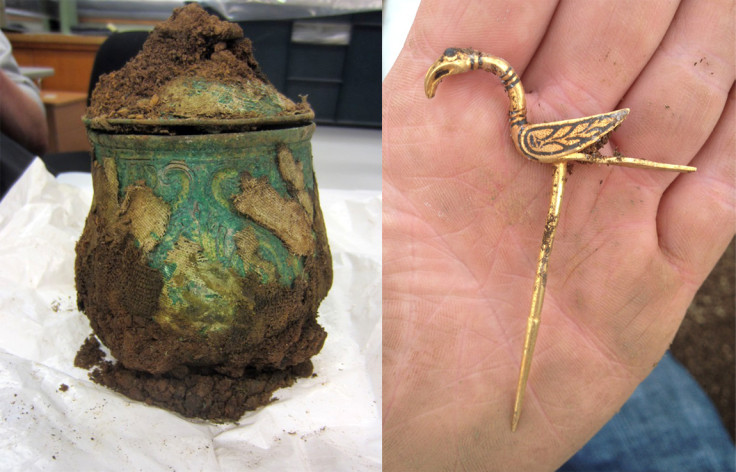In Pictures: Largest Ever Viking Treasure Trove Discovered by Metal Detectorists in Scotland
One of the largest and most spectacular Viking treasure hoards ever seen has been found by metal detectorists on Church of Scotland land in Dumfries and Galloway, southwest Scotland.
The treasure trove consists of over 100 items including silver ingots, armbands and brooches, as well as some objects made of gold including a well-worn gold ring and a gold bird hair accessory. There is also a separate silver alloy vessel with lid that holds even more items, which has not yet been opened.

The items are believed to have been buried between ninth and 10<sup>th century AD and include an early medieval cross in solid silver. Some of the items are believed to be Irish in origin, and the metal vessel is Carolingian (from the Kingdom of the Franks, i.e. Western Europe in the Early Middle Ages).
The closed vessel has what looks like the remains of a cloth sack wrapped around it and archaeologists plan to X-ray the vessel before they open it.

"This is a very important and significant find and has required the close cooperation of Historic Scotland with Treasure Trove Unit and National Museums Scotland staff to recover the fascinating items it contains," Stuart Campbell, head of the Treasure Trove Unit, a Scottish government agency overseeing the recovery and assessment of the find told IBTimes UK.
"Due to the quantity and variety of the objects, and the importance of the find overall, it will take some time for experts to assess the hoard as a whole so that we can appreciate its true significance."

The treasure was discovered by Derek McLennan, 47, a retired businessman and avid metal detector enthusiast who received permission to search in the area.
He has been praised by the Treasure Trove Unit for his "responsible actions" in reporting his discovery to the authorities as soon as he discovered it in September.

"I dragged myself out of my sick bed because I had two friends that wanted to detect and I'm a bit of an obsessive," McLennan told BBC News.
"I unearthed the first piece, initially I didn't understand what I had found because I thought it was a silver spoon and then I turned it over and wiped my thumb across it and I saw the Saltire-type of design and knew instantly it was Viking.
"Then my senses exploded, I went into shock, endorphins flooded my system and away I went stumbling towards my colleagues waving it in the air."

The Treasure Trove Unit says that the find is really significant due to the range of items discovered, and could have been buried for safekeeping, as the area in Scotland where the treasure was found was a Viking area inhabited by Norse people.
"It's clear that these artefacts are of great value in themselves, but their greatest value will be in what they can contribute to our understanding of life in early medieval Scotland, and what they tell us about the interaction between the different peoples in these islands at that time," said Fiona Hyslop, Cabinet Secretary for Culture and External Affairs.
"The Dumfries hoard opens a fascinating window on a formative period in the story of Scotland and just goes to show how important our archaeological heritage in Scotland continues to be."
© Copyright IBTimes 2025. All rights reserved.




















